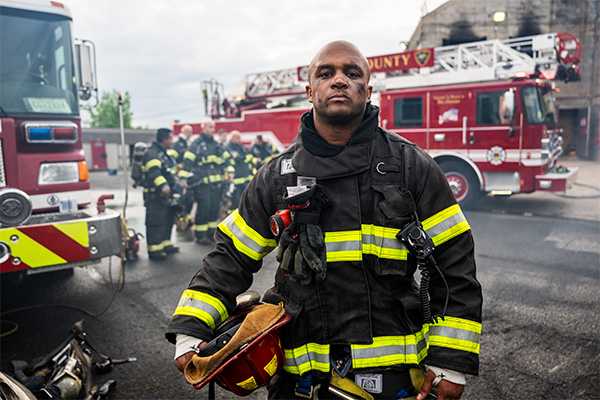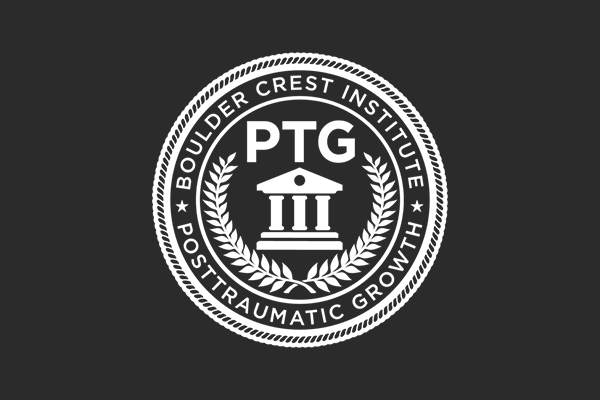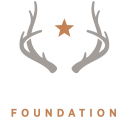HOW TO GROW
Understanding Posttraumatic Growth
Posttraumatic Growth is the centuries-old idea that struggle can be a catalyst for profound growth. It’s cited in ancient literature and religious texts, and is the hero’s journey from Star Wars, Harry Potter and every blockbuster movie from your childhood.
It’s the oldest idea you’ve never heard of. An idea that became a scientific framework in 1995 thanks to the work of Dr. Richard Tedeschi and Dr. Lawrence Calhoun.
The science of Posttraumatic Growth demonstrates that when we’re forced to reflect on our lives and make sense of the destruction caused by trauma, our struggles can become a catalyst for change. That trauma does not have to be the end of the road, but rather the path to a new beginning.
“Through our darkest moments we’re tested and forged into the wiser, more authentic human beings we’re destined to be.”
— Josh Goldberg, CEO, Boulder Crest Foundation

WHAT IS PTG?
WHAT IS TRAUMA?
Traumatic events are often unexpected and can damage or destroy our core beliefs. In the aftermath of trauma, we must rebuild our system of core beliefs, just as a city rebuilds its infrastructure after an earthquake. Better. Stronger.
LEARN HOW TO CHOOSE GROWTH
THE PHASES & DOMAINS OF PTG
Posttraumatic Growth (PTG) is two things – 1) a process that helps us grow in the midst of stress, struggle, hardship, and trauma, and 2) a series of domains where we grow.
PTG FOR LIFE:
LEARNING TO STRUGGLE WELL
Introducing an online course for people wanting to learn more about the science of Posttraumatic Growth (PTG) and how to incorporate growth into your everyday life.

RECOMMENDED READING
· The Choice by Dr. Edith Eva Eger
· Man’s Search For Meaning by Viktor Frankl
· Struggle Well by Ken Falke, Josh Goldberg
· Transformed by Trauma by Richard G Tedeschi PhD, Bret A. Moore, PsyD, Ken Falke, Josh Goldberg
· Posttraumatic Growth Workbook by Richard G Tedeschi PhD, Bret A. Moore, PsyD

Join the Movement
Sign up for the Choose Growth newsletter full of stories, inspiration, and information on how to choose growth in your everyday life.
APPLY FOR A PROGRAM
The training you need to transform your struggle into strength and thrive in the aftermath of trauma.
Warrior PATHH
(For Active Serving Military, Veterans)
Struggle Well Program
(For First Responder Agencies & Military Units)
FAQs About PTG
What is the difference between PTSD and PTG?
PTSD and PTG can both arise from psychological struggle with a highly stressful or traumatic event. PTSD is a diagnosis marked by the experience of multiple trauma-related symptoms, to include re-experiencing the trauma (intrusive thoughts, memories, flashbacks, or nightmares), avoidance behaviors (avoiding people and situations that remind us of trauma), cognitive distortions (loss of memory, counterproductive ideas about life and what happened, persistent negative mood), and increased arousal (irritability, aggressive behavior, hypervigilance, startling easily, sleep problems).
Posttraumatic growth is a process whereby we transform our struggle into a new path, and an outcome where we experience positive changes because of the struggle in the aftermath of trauma. Some people experience symptoms of PTSD and posttraumatic growth at the same time.
Is PTG tied to one specific traumatic event? What if there was a series of events that felt traumatic?
In many cases people experience life-changing circumstances that are not easily described in terms of a single event. In combat, it may not be a single engagement or battle that is the catalyst for change, but an entire deployment into a combat zone. The terminal illness of a loved one may extend over days or months and include many interactions with that person and others. In such cases it can be difficult to identify a single event that has shattered our core beliefs, and indeed, our core beliefs may be shattered over a period through the cumulation of events that challenge our ways of thinking.
How do I know if I am experiencing PTG?
It is possible to notice parts of the PTG process emerging in the aftermath of traumatic events. For example, we might see intrusive thoughts giving way to more deliberate thoughts. This might signify that we are starting to accept what has happened and construct new sets of core beliefs. We might observe disclosure in ourselves or others including themes of growth and transformation. Similarly, we can observe when the story of what happened is being told in a way that incorporates elements of PTG (e.g. personal strength, new possibilities for life, etc.). Noticing elements of the PTG process unfolding in the aftermath of trauma can give us clues that it is happening.
It is important to remember that growth can be accompanied by struggle, emotional distress, dysregulation, and even symptoms of PTSD.
How long will it take me to experience PTG?
There is no specific timeframe for experiencing PTG. The process begins with the shattering of core beliefs and may unfold for months to years afterwards.
Is PTG new? Why haven't I heard of it before?
Although Dr. Tedeschi and Dr. Calhoun coined the term posttraumatic growth in the 1990’s, the idea that human beings can be changed by their encounters with life challenges, sometimes in radically positive ways, is not new. The theme is present in ancient spiritual and religious traditions, literature, and philosophy. What is reasonably new is the systematic study of this phenomenon by psychologists, social workers, counselors, and scholars in other traditions of clinical practice and scientific investigation.





